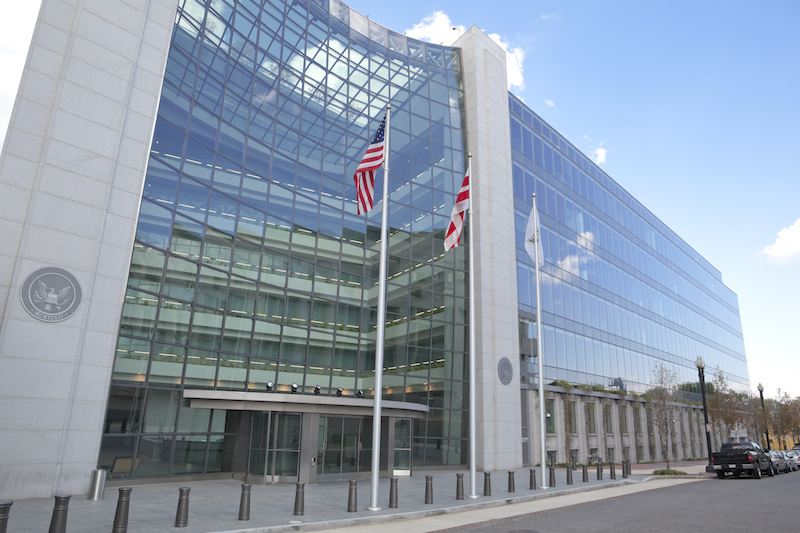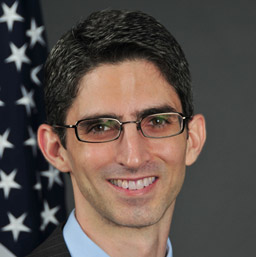
The SEC should do more to support the use of innovative technologies by investors in capital markets.
The federal securities laws, and the agency that administers and enforces them, have been around a long time. They date back to the Securities Act of 1933. The ’33 Act was quickly followed by the Securities Exchange Act of 1934, which, among other things, created the U.S. Securities and Exchange Commission (SEC). The Investment Company Act and the Investment Advisers Act arrived in 1940.
And yet, federal securities regulation is still taking shape.
For example, we have seen the Sarbanes-Oxley Act in 2002, the Dodd-Frank Wall Street Reform and Consumer Protection Act in 2010, and the Jumpstart Our Business Startups Act in 2012. On the rulemaking front, over the past few years the SEC has amended regulatory requirements for alternative trading systems, adopted Regulation Best Interest governing broker-dealer conduct, initiated a revamp of the exempt offering framework, proposed a rule addressing fair value and a board’s role at investment companies, and amended the definition of accredited investor. The U.S. Supreme Court has been active too, deciding a number of significant securities law cases, such as Halliburton II, Salman, Kokesh, Cyan, Lorenzo, and Liu.
In many respects these developments reflect the ordinary way a regulatory regime changes. Regulation is not immutable. Rather, regulation is adjusted based on crises, new facts and circumstances, new transactions and products, shifting priorities, and people’s willingness to make different tradeoffs.
Furthermore, people of good faith and earnestness but with different views transition in and out of key roles at a regulator like the SEC. As the people making the decisions change, they bring their own perspectives and reasoning to bear, influencing how the SEC approaches and effectuates its regulatory responsibilities.
So, regulatory change is nothing new.
Today, however, something is happening that has sharpened the focus on whether rules and regulations need adjustment. Namely, technology is being developed and deployed at an incredible velocity. Technological advances are not just incremental but in many ways are profound. We are living through a digital revolution and information age, and the Fourth Industrial Revolution will impact our lives for generations. Artificial intelligence, machine learning, blockchain, quantum computing, augmented reality, and the Internet of Things are some of the technologies that come to mind.
These technological developments transform the information we have access to, afford us tremendous power to analyze data, permit us to visit physical locations virtually, automate work, create currencies, and facilitate decentralized markets, and much more. In so doing, they affect financial markets, and, therefore, they implicate securities regulation and the SEC.
Fintech startups and well-established global financial firms have already implemented cutting-edge technologies in myriad contexts, such as digital assets, investment advice, trade surveillance, and risk management. The SEC is also integrating emerging technology into how the agency regulates.
The framework and structure of federal securities regulation has fared remarkably well across decades of technological change, demonstrated by technology in our capital markets that years ago was new and that today we take for granted. The original goals of the federal securities laws—encapsulated in the SEC’s mission of protecting investors; maintaining fair, orderly, and efficient markets; and facilitating capital formation—are just as sound today as they were when the landmark federal securities legislation was enacted in 1933, 1934, and 1940. The Code of Federal Regulations is replete with rules and regulations promulgated under these statutes that have remained fit for purpose in the face of unforeseen technology.
But there are times when technological change requires the SEC to modernize rules and regulations—or at least how they are interpreted and applied—so that the regulatory regime is suitable to and does not hinder innovation that stands to benefit investors, businesses, and the operation of our capital markets. This can include the bolstering of safeguards if new methods of misconduct arise that otherwise could escape regulatory strictures.
All that may be needed is a refinement or clarification, such as to explain how a regulatory requirement crafted for the physical world applies to the digital world. A more substantial regulatory change may not be needed, although it is worth keeping an open mind about that.
If regulatory adaptation, when warranted, is not prompt and effective, we risk losing out on the full potential that innovation offers because regulation will impede technology’s application in our capital markets. Ill-fitting regulatory requirements can keep (or, at a minimum, delay) new investment options, capital-raising techniques, methods of detecting and preventing misconduct, and ways of transacting in securities from taking root. On a more macro level, fostering innovation spurs economic growth and opportunity, which is part and parcel of what it means for the United States to be a global innovation leader.
Technological breakthroughs have already necessitated some regulatory updating. Furthermore, new technologies on the horizon and how quickly they will be here make it more important than ever for the SEC and other financial regulators to anticipate how burgeoning research and development might be deployed in financial markets in the future. A forward-looking perspective allows regulators a head start in modernizing regulatory requirements to ensure they are workable when new uses of innovation arrive.
The SEC has taken commendable steps to keep apprised of innovation and to engage with innovators and other market participants. The agency established a distributed ledger technology working group, launched its strategic hub for innovation and technology (FinHub), named a senior advisor for digital assets and innovation, and convened forums on major fintech topics.
The SEC can build on this foundation to help federal securities regulation keep pace with technology. I want to highlight one suggestion.
There are people at the SEC with technological chops, and it is great that the SEC’s first leader of FinHub has an engineering background and that the SEC has invited professors and PhDs with digital assets expertise to serve as visiting scholars.
With this momentum, the SEC should hire more in-house technologists, such as computer scientists, data scientists, cryptographers, engineers, developers, programmers, and the like. More technologists at the SEC—whether they are from academia or the private sector—could work closely with others at the agency versed in technology and with the SEC’s securities regulation and capital markets experts.
Given market dynamics and interconnections, it is not easy to predict the equilibrium effects of regulatory decisions—hence the attention paid to unintended consequences. When market participants apply emerging technology in novel ways in financial services, deciding how to regulate can involve more than the traditional topics and disciplines at the heart of the SEC’s expertise. Skill and insight concerning the technical aspects of the underlying technology can also help in rendering judgments. Simply put, how will the technology work in practice, and what happens if things go sideways? Unease about the answer can engender hesitancy to make regulatory updates needed to encourage the real-world deployment of innovation.
The chance of underappreciating a technological vulnerability decreases as the SEC’s technological knowledge and adeptness expands, providing comfort that an unidentified threat is not lurking that could harm investors, issuers, or the functioning of markets. And the SEC can leverage its technological sophistication in monitoring and overseeing capital markets. In addition, the agency’s technological know-how helps it to appreciate fully a technology’s marketplace benefits and any of a technology’s “regtech” capabilities that promote compliance. Collectively, this sets the stage for the regulatory cost-benefit analysis to weigh in favor of regulatory changes that accommodate innovation.
Never before have the SEC and other financial regulators stared at a present and future full of so much technological advancement. The potential this innovation offers includes lower costs for investors, new investment choices, new funding sources for entrepreneurs, enhanced detection and deterrence of wrongdoing, more competition, more job creation, and more financial inclusion. The SEC has a pivotal role to play in this being realized. The agency is up to the task, but more technologists would help.
This essay is part of an eight-part series, entitled Celebrating The Regulatory Review’s Tenth Anniversary.




